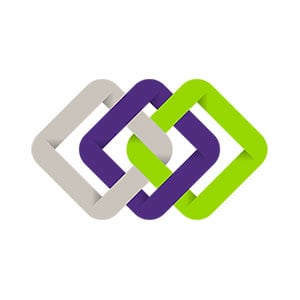-
Financial reporting and accounting advisory services
You trust your external auditor to deliver not only a high-quality, independent audit of your financial statements but to provide a range of support, including assessing material risks, evaluating internal controls and raising awareness around new and amended accounting standards.
-
Accounting Standards for Private Enterprises
Get the clear financial picture you need with the accounting standards team at Grant Thornton LLP. Our experts have extensive experience with private enterprises of all sizes in all industries, an in-depth knowledge of today’s accounting standards, and are directly involved in the standard-setting process.
-
International Financial Reporting Standards
Whether you are already using IFRS or considering a transition to this global framework, Grant Thornton LLP’s accounting standards team is here to help.
-
Accounting Standards for Not-for-Profit Organizations
From small, community organizations to large, national charities, you can count on Grant Thornton LLP’s accounting standards team for in-depth knowledge and trusted advice.
-
Public Sector Accounting Standards
Working for a public-sector organization comes with a unique set of requirements for accounting and financial reporting. Grant Thornton LLP’s accounting standards team has the practical, public-sector experience and in-depth knowledge you need.
-
Tax planning and compliance
Whether you are a private or public organization, your goal is to manage the critical aspects of tax compliance, and achieve the most effective results. At Grant Thornton, we focus on delivering relevant advice, and providing an integrated planning approach to help you fulfill compliance obligations.
-
Research and development and government incentives
Are you developing innovative processes or products, undertaking experimentation or solving technological problems? If so, you may qualify to claim SR&ED tax credits. This Canadian federal government initiative is designed to encourage and support innovation in Canada. Our R&D professionals are a highly-trained, diverse team of practitioners that are engineers, scientists and specialized accountants.
-
Indirect tax
Keeping track of changes and developments in GST/HST, Quebec sales tax and other provincial sales taxes across Canada, can be a full-time job. The consequences for failing to adequately manage your organization’s sales tax obligations can be significant - from assessments, to forgone recoveries and cash flow implications, to customer or reputational risk.
-
US corporate tax
The United States has a very complex and regulated tax environment, that may undergo significant changes. Cross-border tax issues could become even more challenging for Canadian businesses looking for growth and prosperity in the biggest economy in the world.
-
Cross-border personal tax
In an increasingly flexible world, moving across the border may be more viable for Canadians and Americans; however, relocating may also have complex tax implications.
-
International tax
While there is great opportunity for businesses looking to expand globally, organizations are under increasing tax scrutiny. Regardless of your company’s size and level of international involvement—whether you’re working abroad, investing, buying and selling, borrowing or manufacturing—doing business beyond Canada’s borders comes with its fair share of tax risks.
-
Transfer pricing
Transfer pricing is a complex area of corporate taxation that is concerned with the intra-group pricing of goods, services, intangibles, and financial instruments. Transfer pricing has become a critical governance issue for companies, tax authorities and policy makers, and represents a principal risk area for multinationals.
-
Succession & estate planning
Like many private business owners today, you’ve spent your career building and running your business successfully. Now you’re faced with deciding on a successor—a successor who may or may not want your direct involvement and share your vision.
-
Tax Reporting & Advisory
The financial and tax reporting obligations of public markets and global tax authorities take significant resources and investment to manage. This requires calculating global tax provision estimates under US GAAP, IFRS, and other frameworks, and reconciling this reporting with tax compliance obligations.

-
Transactions
Our transactions group takes a client-centric, integrated approach, focused on helping you make and implement the best financial strategies. We offer meaningful, actionable and holistic advice to allow you to create value, manage risks and seize opportunities. It’s what we do best: help great organizations like yours grow and thrive.
-
Restructuring
We bring a wide range of services to both individuals and businesses – including shareholders, executives, directors, lenders, creditors and other advisors who are dealing with a corporation experiencing financial challenges.
-
Forensics
Market-driven expertise in investigation, dispute resolution and digital forensics
-
Consulting
Running a business is challenging and you need advice you can rely on at anytime you need it. Our team dives deep into your issues, looking holistically at your organization to understand your people, processes, and systems needs at the root of your pain points. The intersection of these three things is critical to develop the solutions you need today.
-
Creditor updates
Updates for creditors, limited partners, investors and shareholders.

-
Governance, risk and compliance
Effective, risk management—including governance and regulatory compliance—can lead to tangible, long-term business improvements. And be a source of significant competitive advantage.
-
Internal audit
Organizations thrive when they are constantly innovating, improving or creating new services and products and envisioning new markets and growth opportunities.
-
Certification – SOX
The corporate governance landscape is challenging at the best of times for public companies and their subsidiaries in Canada, the United States and around the world.
-
Third party assurance
Naturally, clients and stakeholders want reassurance that there are appropriate controls and safeguards over the data and processes being used to service their business. It’s critical.
-
 ASPE Sec. 3041 Agriculture Understanding and applying the new ASPE Section 3041 AgricultureThe Canadian Accounting Standards Board (AcSB) has released new guidance on recognizing, measuring and disclosing biological assets and the harvested products of bio assets.
ASPE Sec. 3041 Agriculture Understanding and applying the new ASPE Section 3041 AgricultureThe Canadian Accounting Standards Board (AcSB) has released new guidance on recognizing, measuring and disclosing biological assets and the harvested products of bio assets. -
 Tax alert Agricultural Clean Technology ProgramThe Agricultural Clean Technology Program will provide financial assistance to farmers and agri-businesses to help them reduce greenhouse gas (GHG) emissions.
Tax alert Agricultural Clean Technology ProgramThe Agricultural Clean Technology Program will provide financial assistance to farmers and agri-businesses to help them reduce greenhouse gas (GHG) emissions. -
 Tax alert ACT Program – Research and Innovation Stream explainedThe ACT Research and Innovation Stream provides financial support to organizations engaged in pre-market innovation.
Tax alert ACT Program – Research and Innovation Stream explainedThe ACT Research and Innovation Stream provides financial support to organizations engaged in pre-market innovation. -
 Tax alert ACT Program – Adoption Stream explainedThe ACT Adoption Stream provides non-repayable funding to help farmers and agri-business with the purchase and installation of clean technologies.
Tax alert ACT Program – Adoption Stream explainedThe ACT Adoption Stream provides non-repayable funding to help farmers and agri-business with the purchase and installation of clean technologies.
-
Builders And Developers
Every real estate project starts with a vision. We help builders and developers solidify that vision, transform it into reality, and create value.
-
Rental Property Owners And Occupiers
In today’s economic climate, it’s more important than ever to have a strong advisory partner on your side.
-
Real Estate Service Providers
Your company plays a key role in the success of landlords, investors and owners, but who is doing the same for you?

-
Mining
There’s no business quite like mining. It’s volatile, risky and complex – but the potential pay-off is huge. You’re not afraid of a challenge: the key is finding the right balance between risk and reward. Whether you’re a junior prospector, a senior producer, or somewhere in between, we’ll work with you to explore, discover and extract value at every stage of the mining process.
-
Oil & gas
The oil and gas industry is facing many complex challenges, beyond the price of oil. These include environmental issues, access to markets, growing competition from alternative energy sources and international markets, and a rapidly changing regulatory landscape, to name but a few.

From accounting to forecasting and everything in between, our glossary is designed to help you better understand the terms you’ll come across on your journey to building a strong financial future for your business.
Accounting
The process of recording, classifying, and summarizing financial transactions to provide information that is useful for decision making.
Accounts payable
The money a business owes to vendors for goods or services received but not yet paid for.
Accounts receivable
The money a business is owed by customers for goods or services provided but not yet paid for.
Accrual accounting
An accounting method that recognizes revenue and expenses when they are incurred, regardless of when cash is exchanged.
Amortization
A process gradually reduces the value of a loan or intangible asset over a period of time.
Audit trail
A record of all the changes made to a company's financial records, used to track and verify transactions.
Automated invoicing
The ability of accounting software to automatically generate and send invoices to customers.
Balance sheet
A financial statement that shows a company's assets, liabilities, and equity at a specific point in time.
Bank feeds
A feature of cloud accounting software that automatically imports bank transactions into the system.
Bank reconciliation
The process of comparing a company's records of its bank account balance to the bank's records of the same account.
Bookkeeping
The process of recording financial transactions and maintaining financial records.
Budget
A financial plan that outlines a company's expected income and expenses over a specific period of time.
Cash accounting
An accounting method that recognizes revenue and expenses when cash is exchanged.
Cash equivalents
Short-term assets resulting from cash invested by a business with an interest-earning financial institute in securities such as stocks, bonds, treasury bills, commercial paper, or other known securities.
Cash flow
The movement of money in and out of your business each month or over a given period, including cash and cash equivalents.
Cash flow statement
A financial statement that shows the cash inflows and outflows of a company over a specific period of time.
Cash flow insolvency
When a business has adequate assets to pay their debts but does not have the cash at hand to pay them.
Chart of accounts
A list of all the accounts used by a business to classify its financial transactions.
Cloud accounting
Accounting software that is accessed via the internet rather than being installed on a local computer.
Cloud storage
The ability to store and access data on remote servers over the internet.
Compliance
The process of ensuring that a company's financial practices are in line with legal and regulatory requirements.
Cost of goods sold (COGS)
The direct costs associated with producing or purchasing the goods sold by a company.
Data backup
The process of copying and storing data.
Data security
Measures taken to protect sensitive financial information from unauthorized access or theft.
Depreciation
The systematic reduction in the value of an asset over time.
Disaster recovery
Plans and processes in place to recover from a disaster or system failure.
Double entry accounting
An accounting system in which every transaction is recorded via a journal entry in at least two accounts, with the debits and credits balancing each other.
E-commerce
The buying and selling of goods and services over the internet.
EOFY
The abbreviation for end of financial/fiscal year.
Equity
The amount of money that an owner and/or shareholders has invested in a business.
Expense tracking
The process of recording and categorizing a company's expenses for tracking and analysis.
Financial analysis
The process of analyzing a company's financial performance and making recommendations for improvement.
Financial close
The process of finalizing a company's financial statements and preparing for the next reporting period.
Financial ratios
Calculations that compare different aspects of a company's financial performance, such as profitability or liquidity.
Fixed assets
Long-term assets, such as property and equipment, that are expected to provide benefits to a business for more than one year.
Forecast
An estimate of a company's future financial performance, based on historical data and other factors.
General ledger
A master record of all the financial transactions of a business.
Income statement
A financial statement that shows a company's revenues, expenses, and net income (or loss) over a specific period of time.
Integration
The ability of accounting software to integrate with other business applications, such as inventory management or customer relationship management (CRM) software.
Insolvency
When a business is unable to pay its debts when they become due.
Inventory
The goods a business holds for sale or use in its production.
Invoice financing
A financing option in which a company sells its accounts receivable to a lender at a discount in exchange for immediate cash.
Journal
A detailed document listing the company’s financial transactions chronologically by date.
Journal entry
Used to record a business transaction in the accounting records of a business.
Liquidity
How easily an asset can be turned to cash without loosing significant value.
Margin
A company's ratio of profit to revenue.
Multi-currency
The ability of accounting software to handle transactions in different currencies.
Online payment processing
The ability of accounting software to process electronic payments from customers.
Overheads
The costs that are incurred in the daily operations of a business.
Payment gateway
A service that processes electronic payments from customers on behalf of a merchant.
Payroll
The process of calculating and distributing employee salaries and wages.
Payroll taxes
Taxes that employers and employees pay on salaries and wages and remit to the government.
Profit and loss statement
This is the same as income statement.
Receivables aging
A report that shows open accounts receivable based on the length of time an invoice has been outstanding.
Reconciliation
The process of comparing two sets of records to ensure they are in agreement.
Reconciling item
Transaction representing a difference between your general ledger and the source document being compared.
Retained earnings
The portion of a company's profits that is retained for reinvestment rather than being distributed as dividends. They are recorded in the shareholder's equity section of the balance sheet at the end of each accounting period.
Return on Investment (ROI)
The measure of what you have gained in relation to what you have paid out.
Sales tax
A tax on the sale of goods or services, typically charged as a percentage of the sale price.
Software as a Service (SaaS)
A cloud-based software delivery model in which a vendor hosts and maintains the software and customers access it over the internet.
Subledger
A detailed record of transactions for a specific account, such as accounts payable or accounts receivable.
Tax compliance
The ability of accounting software to generate tax reports and comply with tax regulations.
Trial balance
A report that lists all the accounts and their balances in a company's general ledger.
User permissions
The ability of accounting software to limit access to certain features or data based on user roles and permissions.
Value-added tax (VAT)
A tax on the value added at each stage of the production and distribution of a product or service.
Working capital
The difference between the company's current assets such as cash and accounts receivable and its current liabilities such as accounts payable and current debts.
Write-off
A reduction in the recorded amount of an asset.
Get the latest information in your inbox.
Subscribe to receive relevant and timely information and event invitations.


